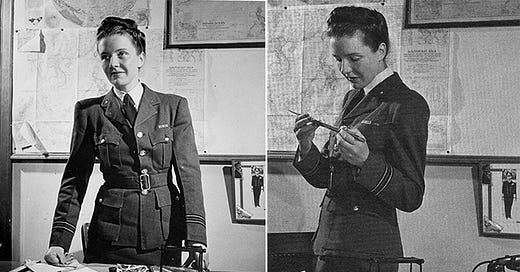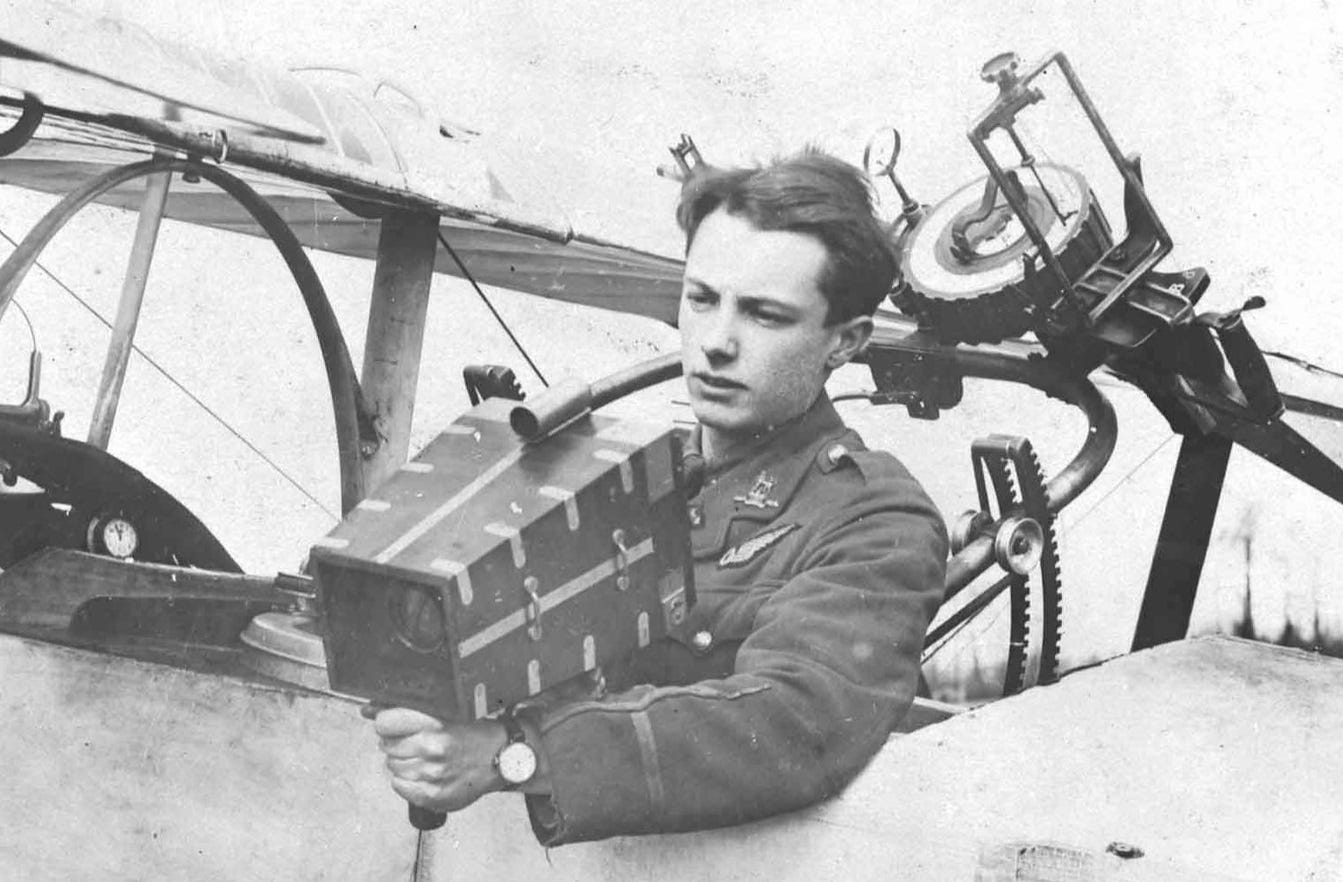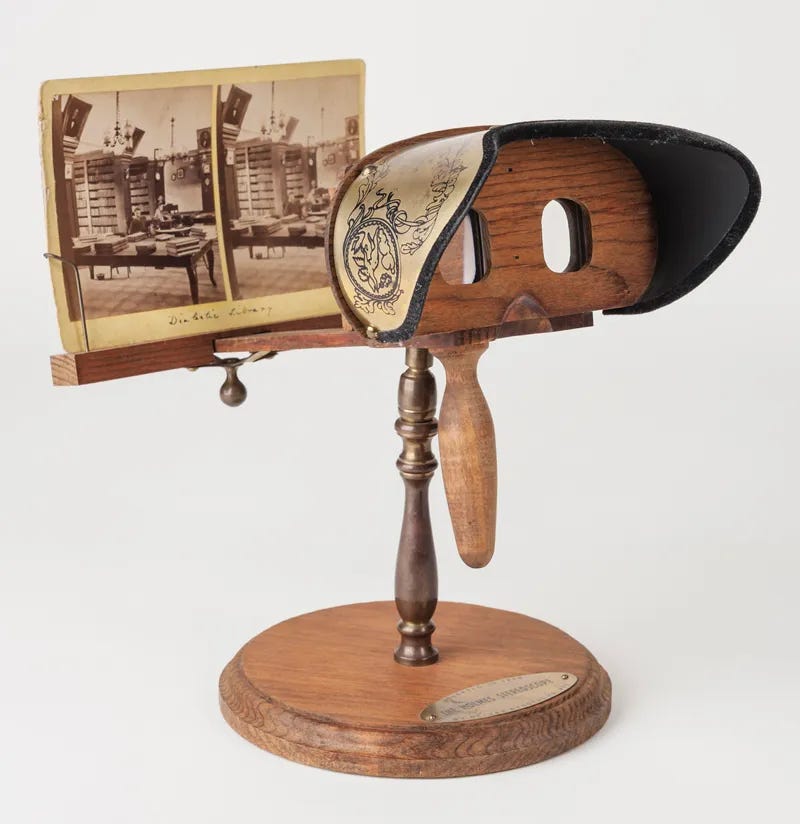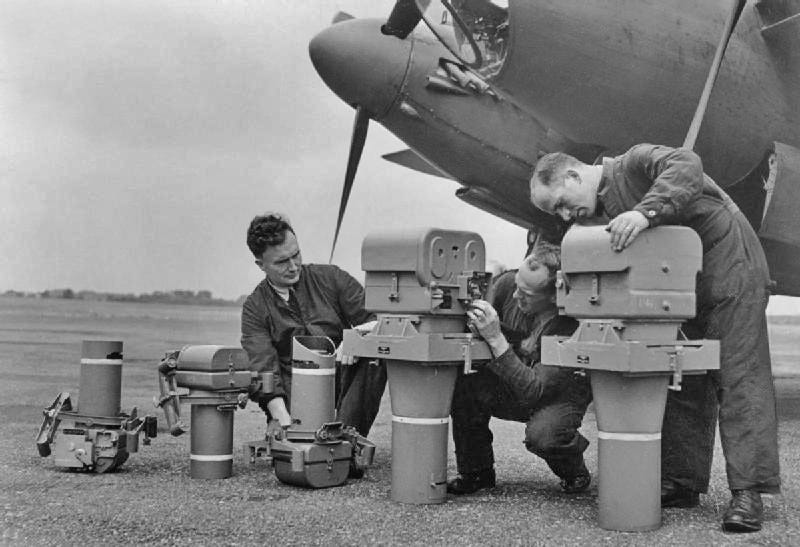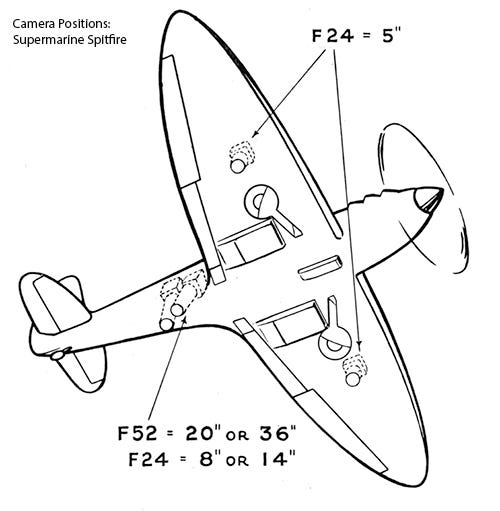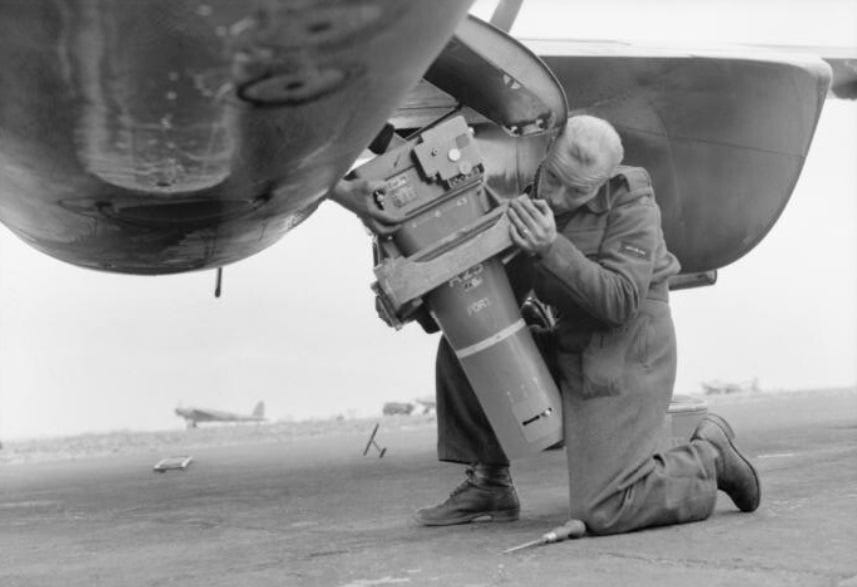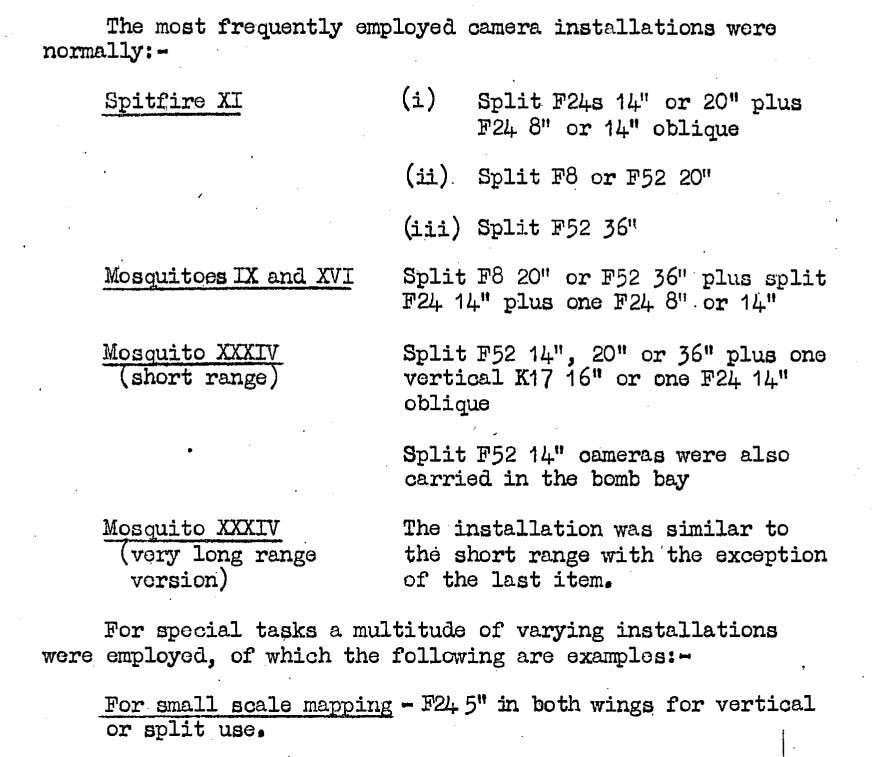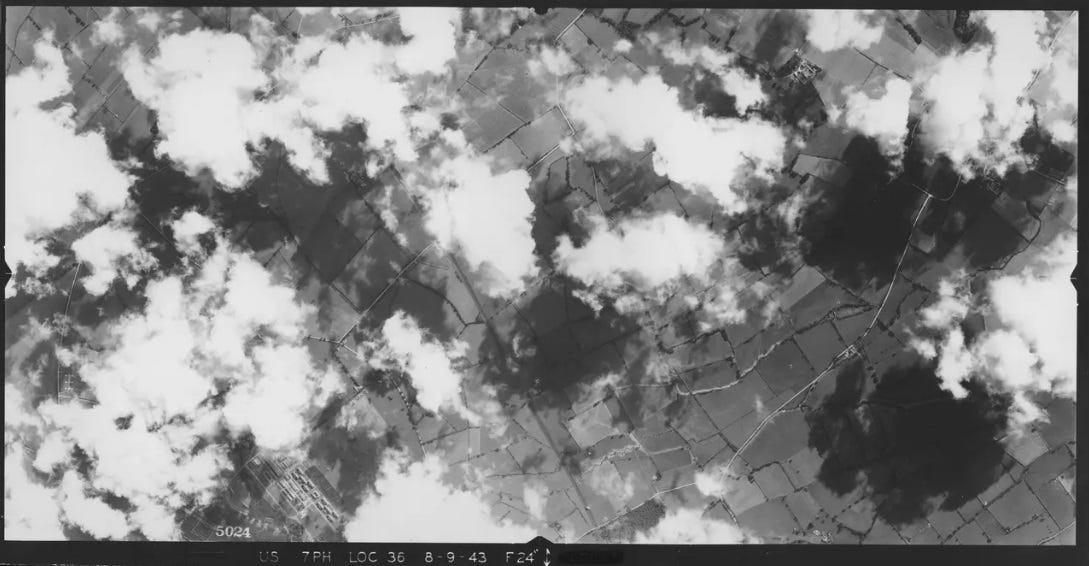Aerial Photographic Technology of WW1 & 2
A story of aerial surveillance and photographic interpretation
This week we’re taking a dive into the rapid evolution of aerial photographic surveillance technology during WW1&2. Also, we’ll look at how effective that technology was at producing usable images for the photographic interpreters to analyse. Today’s post will be focusing on the British perspective.
Aerial surveillance began when humans climbed trees and cliffs to get a better view for spotting food, shelter, fuel sources, predators, and the activities of other people.
- J.K Petersen
Viewing things from height, for a strategic purpose. That seems to be the definition for aerial surveillance, and to go back to our beginnings as a species it’s true that we’ve often found an advantage when able to gain height for an overview of an area. For thousands, if not hundreds of thousands, of years we’ve not been able to gain height at will. Limited to mountains, trees, high ‘stuff’, I suppose there was a belief that birds had complete dominance of the skies.
In fact you’ve got to skip through loads of history to get to 2nd June 1794, which was the first time that humans went into the air by balloon for strategic surveillance in war.
The balloon remained in the air for 9 hours and the information was relayed to the French Army via physical written notes and semaphore. Although not seen as a huge success, retrospectively we can say that it definitely kick started the idea that ‘eyes in the sky’ were no bad thing!
Hitting fast forward again, with the balloon changing shapes and designs throughout the 1800s, we land at WW1. Gone were the days of throwing notes and relying on eyesight with semaphore, they had a telecom line, binoculars, parachutes (health and safety, very important in a hydrogen filled balloon…), and MOST importantly, as it was now 1914 and cameras exist, a long-range photographic camera.
Although not for military purpose, Thomas Edison Inc was also in on the race to get a camera into the sky. The video below is from 1902, looking over the streets of San Francisco. Getting up to a height of 1500ft, before being winched back down.
Sadly, many of these balloons were lost - due to the hydrogen igniting mainly - and the thirst for bigger, better, higher and safer quickly became apparent. World War 1 saw the evolution from balloons, to kite balloons, to Dirigibles and Zeppelins, finally landing at putting cameras on planes.
Aerial surveillance’s advancements were, perhaps obviously, directly tied to the advancements in flying devices. Importantly, being higher meant being safer and out of the reach of artillery and most ground-based weapons. But also, as war often pushes technology to its’ limit, it was quite dangerous for the pilots to both fly and operate these primitive photographic systems.
Fast forward one year to 1915 and photographic systems on planes were finally effective, although still very dangerous to operate. Regardless, the British knew that the faster & higher advantage would give them an edge on the battlefield. Invented by Lieutenant-Colonel J.T.C. Moore-Brabazon, the “A” camera was not fixed to the aircraft but instead a handheld device you would operate whilst flying. Shooting on 5”x4” glass plates, with a 8 1/4”(210mm) lens or a 10” (250mm) option. Imagine changing glass plates at 5,000ft, or lenses… cold.
Fortunately, technology was about to save a couple of finger tips from freezing off, and by the late summer of the same year (1915) the ‘C’ type came along with a semi-automatic plate changer. Meaning even more information could be captured from each reconnaissance sortie. By 1916 the speed of processing was down to under an hour from the moment a photo was taken, to the interpretation team receiving it.
Skip on to 1918 and the cameras could operate effectively at 15,000 ft, up from 6,000ft previously, and the interpretation team had a staff of 3,000. Cameras were capable of shooting on 18” x 24” plates, with 20” (508mm) lenses. Also, WW1 saw the beginning of experimentation with oblique & stereoscopic aerial surveillance. Both required manual operation though, and oblique photography was risky as the pilots would often have to fly much lower than was considered ‘safe’ to achieve that oblique view across the warscape. Similarly, the stereoscopic attempts had to be taken manually, meaning the camera operator would have to take two exposures of the same area separated by a slight time delay so that when viewed through a stereoscopic viewer the illusion of relief would become apparent.
According to the national archives, hundreds of thousands of photographs were taken over the course of WW1. Amazingly in 1918 alone over 5.28 million photographs were produced. Which is a signifier of how rapidly this technology was advancing and also that it was becoming increasingly useful for the war effort. Also, amazing when you consider that last year (2023) 196 million photos were taken - per hour! - how times have changed. I wonder how many of those photos are from the tops of trees or balloons. Anyway, on to World War 2!
Between the two world wars there was a slowdown in technological advancements across both flying systems and photographic systems. Equally so, the almost complete absence of photographic interpretation training during this peace-time meant that only one experienced RAF interpreter was at their post in the air ministry during the summer of 1939. Which is astonishing now that we know that 80% of the intelligence gathered during WW2 was due to aerial recon.
The range of aircraft in the Second World War added strategic coverage over the enemy’s homeland. Though it has received less attention than the cipher-breaking successes
- M Herman
At the beginning of WW2 the British effort was lacking, the technology wasn’t keeping pace with the need for information gathering that would prove so crucial to prevent an overall loss. Camera and Aircraft technology needed to merge and evolve together, and that’s exactly what happened. Although, this did come at a cost. It turns out that putting a large mechanical machine that carries multiple glass plates and needs to operate automatically doesn’t leave much room for… weaponry. I realise it sounds absolutely implausible, but many of the recon missions of WW2 were flown by pilots that carried absolutely no weapons of any kind. This was a huge risk / reward strategy, but ultimately it did pay off and there were a few huge breakthrough successes.
Successes we should absolutely attribute to the pilots, but equally so to the interpreters as their skill at noticing details within these huge photographic landscape strips brought to light, among other strategic wins, the V1 rockets. Which, if left undiscovered, would’ve reigned hell over Britain.
At the start of WW2 there were three main aircraft used for reconnaissance sorties: The Bristol Blenheim, Fairey Battle and the Westland Lysander. But they were fast becoming outdated, their main issue being speed and overall performance. Fortunately there was another option available, the Spitfire.
The Spitfire was fitted with an F.24 camera on each wing and sent out for work. Though these cameras had a much higher output than the cameras of WW1, there was still a want for more information gathering capability. The F.24 held 250 exposures, which (of course) prompted the creation of the F52 - up to 500 exposures. Thankfully, the gearbox of the F.52 camera was similar enough to the F.24 that it lessened any production complications when fitting them to the planes.
Most of the mechanical complications came with these machines being at altitudes of 30,000ft. Cloud cover was one problem, so anti-haze filters were a must to improve detail and contrast. Heating was also a problem; the camera’s mechanisms would often freeze leaving the sortie at a total effective loss. The invention of a closed camera compartment which was then fed warm air directly from the engine not only streamlined the whole system removing the need for a dedicated heater for the cameras, it solved condensation issues on the lenses and also prevented the camera’s systems from siezing. Now the only way the camera would freeze is if the plane failed to function…
We took our aerial photos vertically with two cameras which occupied the full depth of a Spitfire fuselage. Each carried a magazine holding 500 whole-plate pictures measuring 8½ by 6½ inches. The camera lenses, the size of small saucers, had a focal length of 36 inches, which was a remarkable optical achievement by their makers
- R. Holmes
The Spitfire kept a lot of surveillance pilots alive with excellent speed and manoeuvrability, crucially important when the pilots were operating without any weaponry. Though, this presented a unique challenge for the photographic system: motion blur.
Motion blur wasn’t too great a problem when photographing at altitude, but for the oblique approach where the cameras were mounted front facing on each wing for a stereoscopic reproduction it was crucial that during the exposure time of the film strip the mechanism of the camera actually counteracted the velocity of the aircraft - producing a crisp and sharp image. This camera was called the F63 and was originally based on an American idea.
Especially important when dealing with the Spitfire’s weaponless modification, which gave it a top speed of 396mph - lots of motion blur.
The next advance was to place the cameras in a ‘split’ configuration that had two cameras within the same housing but angled at 5 degrees from vertical. This offered a 10% lateral overlap in the images and almost doubled the area of capture. Again, this advance doubled the effectiveness of these cameras and technology was allowed to move faster than before due to the lessening of production problems caused by the F.52 camera.
All of these photographic systems were remote controlled, by the pilot, allowing for more accurate information capture as the pilot would be able to activate the cameras as a live reaction to the environment they were in. Which was important, as when they clicked ‘go’ the camera would then start to spool the film against the image plane at a speed of 1 image per second, for a total of 500 seconds - This resulted in the interpreters getting a huge chunk of negatives that were then stitched together - like looking at a giant aerial strip-scan of a landscape.
For the stereoscopic efforts, special devices called Wild A-5 Photogrammetric Comparators were used, I’ll attach a picture of one later on.
For more information on the camera itself I’ve attached the Patent to one of the F-type WW2 cameras here.
To speed up film processing, a continuous film processing machine was introduced by Kodak during 1941 which developed, dried and spooled film at the rate of 4 feet every second. During 1941, also, the Williamson Multiprinter was introduced for rapid production of prints.
-RAF
Beyond the spitfire came the Mosquito which was a lighter aircraft and allowed for longer flight time, slightly higher ceiling at 35,000ft, longer missions, and a deeper view into enemy territory. Camera technology remained mostly unchanged though, after all of these significant advancements, the British had a world-class reliable reconnaissance unit.
Despite all that, there still needed to be eyes on the ground capable of understanding these images. As we said earlier, the training between WW1 and WW2 had all but stopped. Thankfully this swung hard as soon as things kicked off in WW2 and the photographic interpretation rooms were full steam ahead very soon after things started in 1939.
The Allies had a central interpretation unit with a daily intake of 25,000 negatives, at peak totalling 1 million negatives per month and 140,000 duplicate exposures with 40,000 detailed interpretation reports. In total, 36 million negatives were produced during the war, with 10 million of them still surviving today and kept in Edinburgh, Scotland (a lot of the survivng images are also stereoscopic). A huge increase in information when compared to WW1. There was also so much pressure on the interpreters to ‘see’ what was wanted to be ‘seen’. This did result in a few mistaken targets, such as a neutral Danish Island that was accidentally bombed.
Many of the interpreters were Women, mainly because most of the men were drafted and sent to fight, but it’s fair to say many of these women were also drafted - voluntarily - and became such a significant asset to the war effort. Let’s not forget, as mentioned before, 80% of the intel gathered during WW2 was through aerial surveillance. And although the pilots may be the ones taking these huge spools of images, the interpreters are the crucial translators to make that captured information legible.
Interpretation was broken down into three main areas of study: 1. Tone, 2. Light & Shadow, 3. Shape and Size. Understanding light was so important, as often large bodies of water were photographed and the interpreter would need to know how that may present within a photograph - such as appearing completely dark, as if the lake is smooth most of the sunlight will be reflected. Also, orienting the image by sun position gave the interpreters the best chance at understanding how the “shadows and shapes” were to be interpreted.
Famously, Constance Babington Smith employed her skillset to great effect and is responsible for the discovery of the V1 rockets, also the discovery of multiple launch ramps that were aimed at Britain. Meaning that fighter pilots were able to retaliate and lessen the effectiveness of that campaign due to her interpretation skills.
If German plans for up to 2,000 V-Weapons landing in London in 24 hours had come to fruition we could have faced a deluge of destruction and the liberation of Europe might have been postponed if not prevented
- Halsall
In the image below, this is a single negative output from one of the cameras. The negative is 24” wide (609mm - quite a bit bigger than 35mm film) and there would’ve been loads of these to comb through for a single recon run.
In this second image, you can see some warehouses. Which you may recognise from the first image (they’re at the bottom left between two clouds) That sense of scale hopefully gives you an idea of the patience and concentration these interpreters needed in order to be as effective as they were.
If you’d like to explore some of these images yourself, and get a feel for the scale and detail they captured - follow that link above.
Big negative = Big detail, and it’s quite amazing that - in such a short space of time - they went from Balloons and semaphore to cameras that could compensate for the velocity of the aircraft whilst taking stereoscopic images at 1 photo per second, especially with film that size. Hopefully you get a sense of how impressive that mechanical achievement really was.
It does make me think of our current trends in cinematography. I always joke about large format cinematography not really being large format, as large format photography is 8cmX10cm. Though, revisiting these machines from the past, perhaps it would be mechanically possible now to create a camera that shoots 8x10 film at 24 FPS. Perhaps that system already exists?
Oh! Before I forget, here’s a picture of the Wild A-5 photogrammetric comparator…


